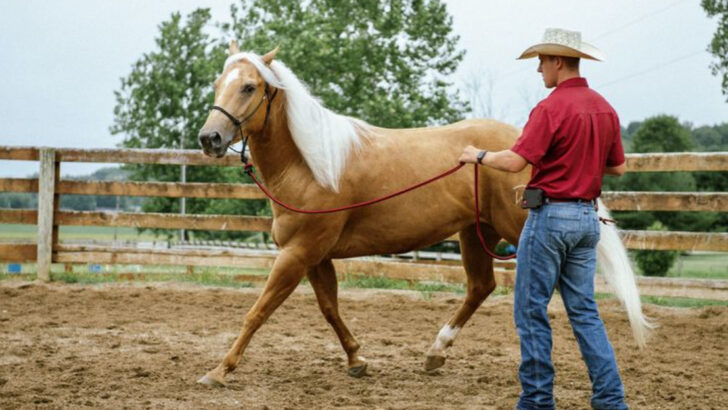A good trail horse isn’t just born—it’s made through patience, training, and a whole lot of trust. No matter how calm or confident a horse seems, the unpredictable world of the trail will put their skills to the test.
From crossing rushing streams to standing still when the unexpected happens, every great trail horse learns to handle challenges with steady hooves and a cool mind. Spooking at a rustling bush or refusing to load into a trailer? Those are lessons that need to be tackled early.
The right training can turn a nervous horse into a fearless partner, ready for any adventure. It’s not just about riding—it’s about teaching them to think, trust, and respond in a way that keeps both horse and rider safe.
So, whether you’re training a young horse or refining an older one, these essential lessons will ensure your trail partner is prepared for anything the great outdoors throws their way!
Ground Manners
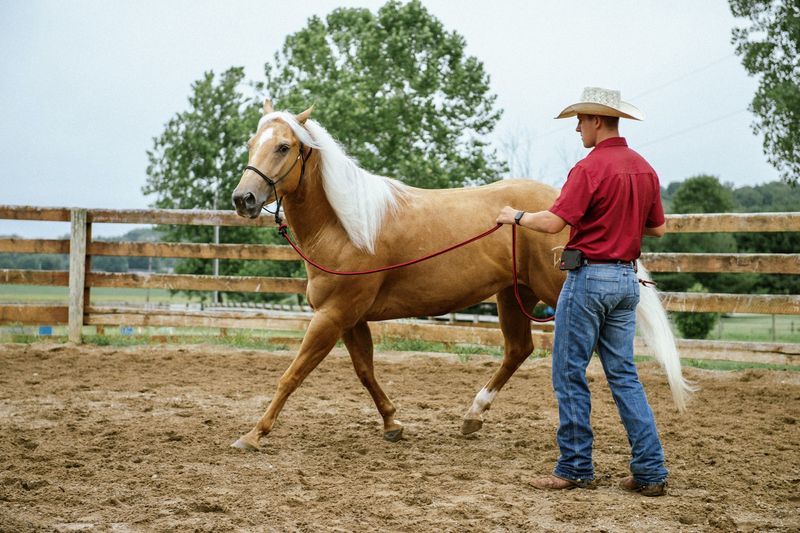
Ground manners are a foundational skill for any trail horse. A horse that respects personal space and follows commands makes for a smoother experience on the trails.
Teaching ground manners involves consistent practice and clear communication. This lesson enhances safety for both the horse and rider, reducing risks of unpredictable behavior.
Start with basic commands like ‘walk’, ‘stop’, and ‘back up’, gradually introducing more complex directives. A horse with good ground manners is more likely to stay calm in unfamiliar environments, making each ride enjoyable.
Desensitization to Noise
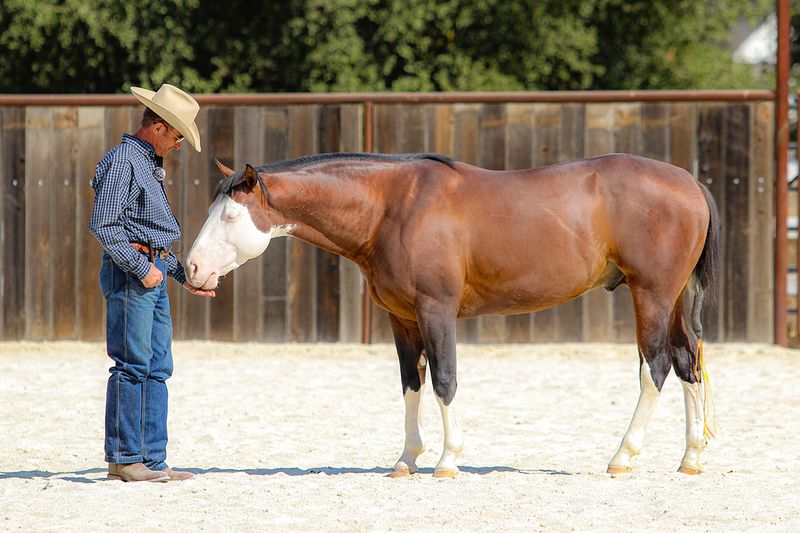
Trail rides are full of unexpected sounds. A horse’s ability to remain calm amid startling noises is crucial.
Begin by exposing horses to various sounds in a controlled environment, gradually increasing the volume. Teaching them to associate sounds with positive experiences helps.
Patience is key; ensure your horse feels secure and build their confidence over time. This preparation ensures that sudden noises, whether from wildlife or rustling leaves, won’t disrupt your journey.
Navigating Water Crossings
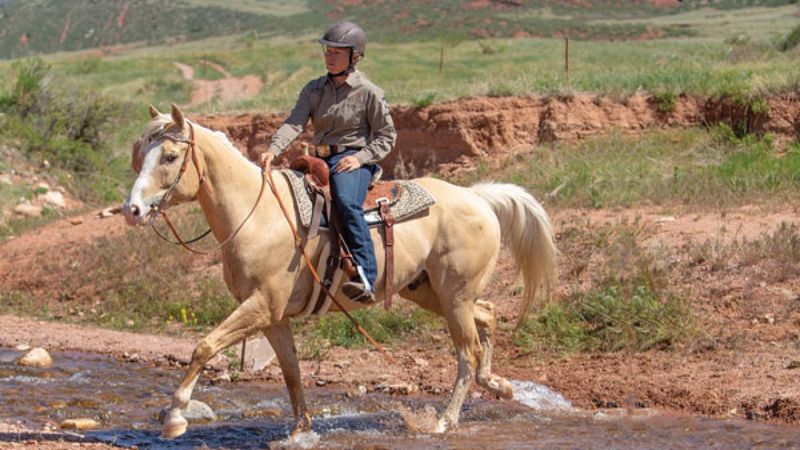
Water crossings challenge many horses. A confident approach is vital for a successful trail ride.
Start with shallow streams, encouraging your horse to explore the water at its own pace. Use positive reinforcement and patient guidance.
Over time, increase the difficulty by finding deeper or faster-moving water. This skill becomes invaluable on trails where water obstacles are unavoidable.
Handling Wildlife Encounters
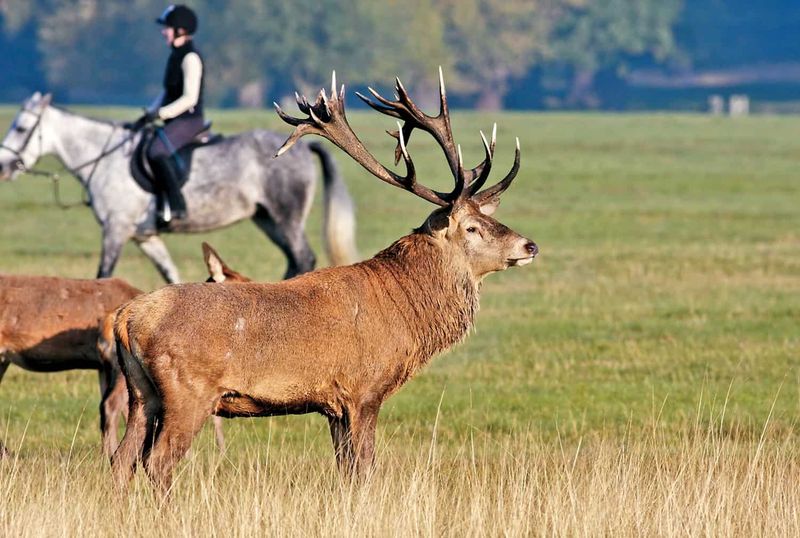
Horses often encounter wildlife on trails. Teaching them to stay composed is essential.
Gradual exposure to small animals, like birds or squirrels, can help acclimate horses. Over time, introduce larger animals at a distance.
Reward calm behavior and never rush the process. A positive approach encourages horses to remain steady, ensuring both their safety and yours during unexpected wildlife encounters.
Crossing Bridges
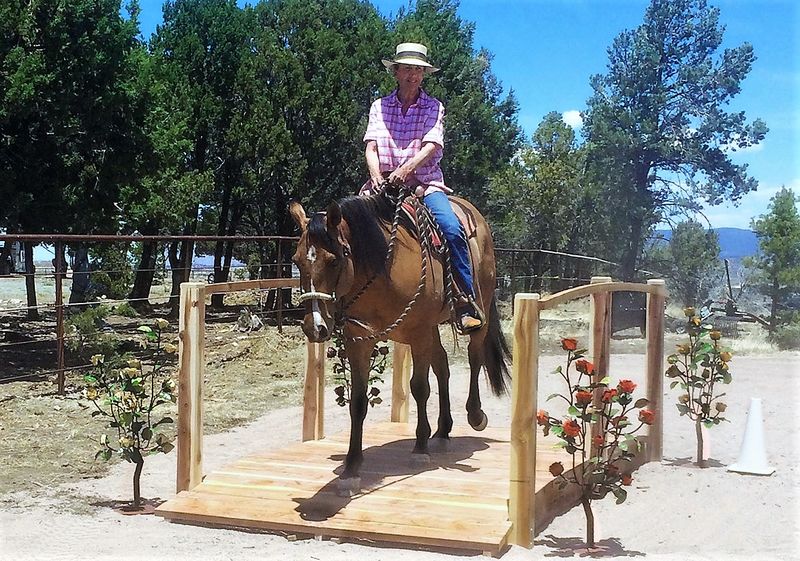
Crossing bridges can be daunting for some horses. Building trust is fundamental.
Familiarize horses with different bridge types, starting with stable ones. Gradually introduce less stable structures, ensuring your horse feels secure.
Consistent practice and reassurance from the rider build confidence. A horse that trusts its rider will traverse bridges more smoothly, making the trail experience less stressful.
Trail Obstacles Navigation
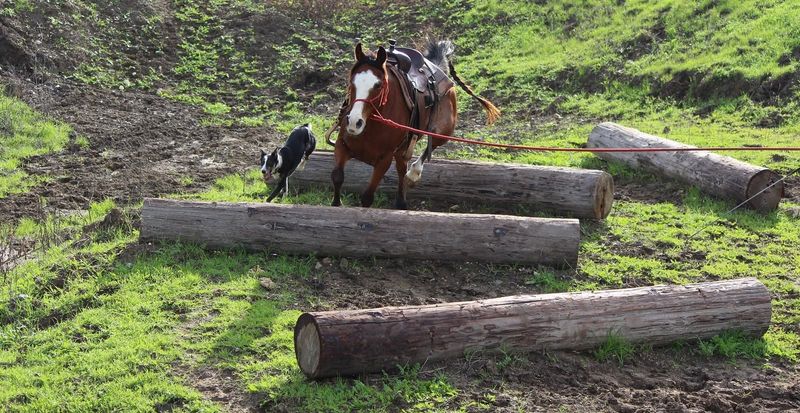
Trail rides are full of obstacles. Training a horse to maneuver around them is crucial.
Begin with simple obstacles like cones or poles, increasing complexity over time. Encourage your horse to think and respond to cues.
Patience and consistency in training build agility and confidence. Successful obstacle navigation reduces risks and enhances the riding experience.
Calmness in Group Rides
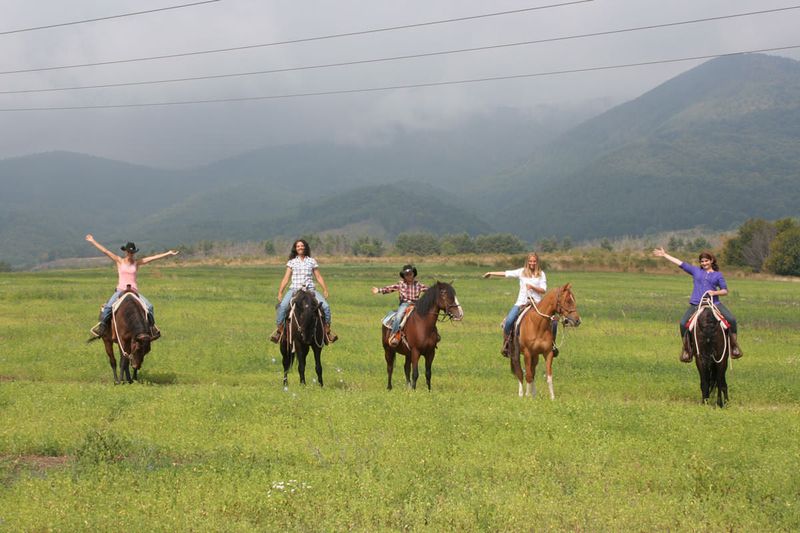
Group rides add excitement and challenges. A horse’s ability to stay calm in groups is vital.
Start with small groups, allowing your horse to get comfortable. Gradually increase the number of horses.
Encourage positive behavior and discourage agitation by rewarding calmness. This lesson ensures a harmonious group experience, minimizing stress for both horse and rider.
Standing Still
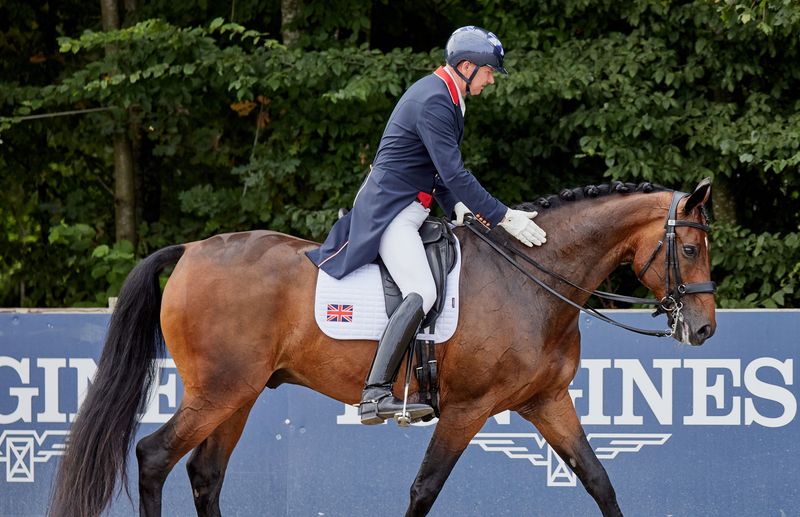
Standing still is crucial, especially during rest stops or emergencies.
Teach your horse to stand quietly using verbal cues and gentle reins. Consistency is key for reinforcing this behavior.
Practice in various settings to ensure adaptability. A horse that stands still on command is easier to manage, making trail rides more enjoyable and controlled.
Up and Downhill Riding
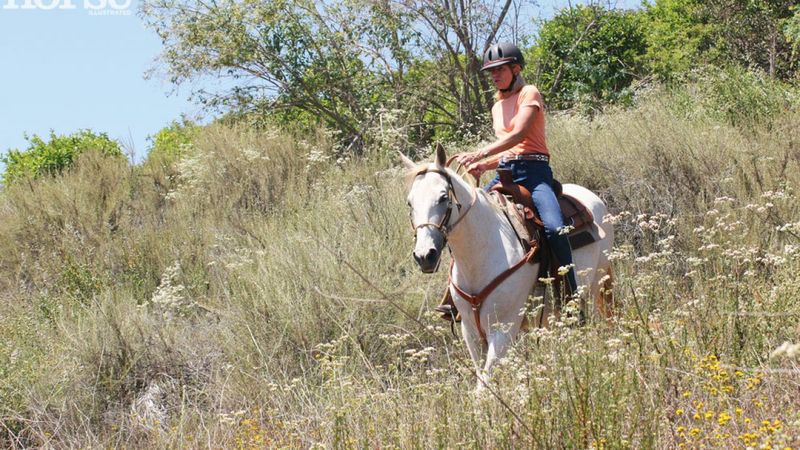
Riding up and downhill requires balance and skill. Proper training prevents injuries.
Start with gentle slopes, advancing to steeper gradients as your horse gains confidence. Encourage maintaining a steady pace and balanced posture.
Understanding natural terrain helps improve a horse’s agility. Mastering these skills reduces the risk of falls and enhances trail safety.
Handling Loose Dogs
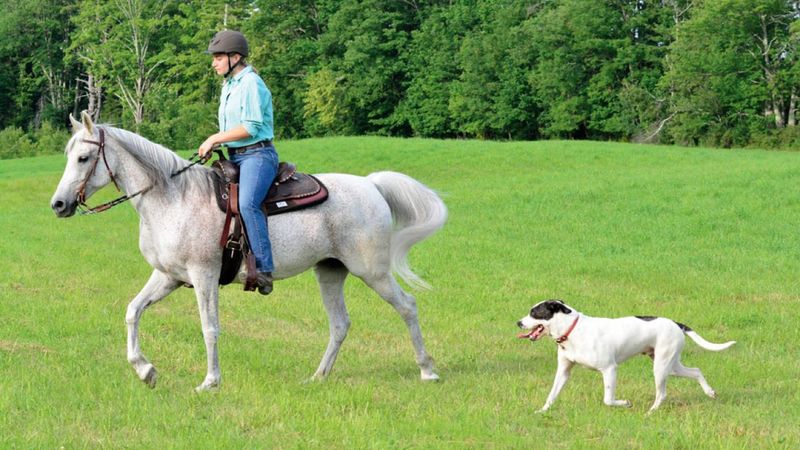
Loose dogs can be unpredictable. Training horses to stay calm is essential.
Gradually expose your horse to dogs in controlled settings, rewarding calm behavior. Simulate encounters to build trust.
A calm horse is less likely to react negatively, ensuring a safer ride. Consistent practice fosters confidence in both horse and rider.
Loading and Unloading from Trailers
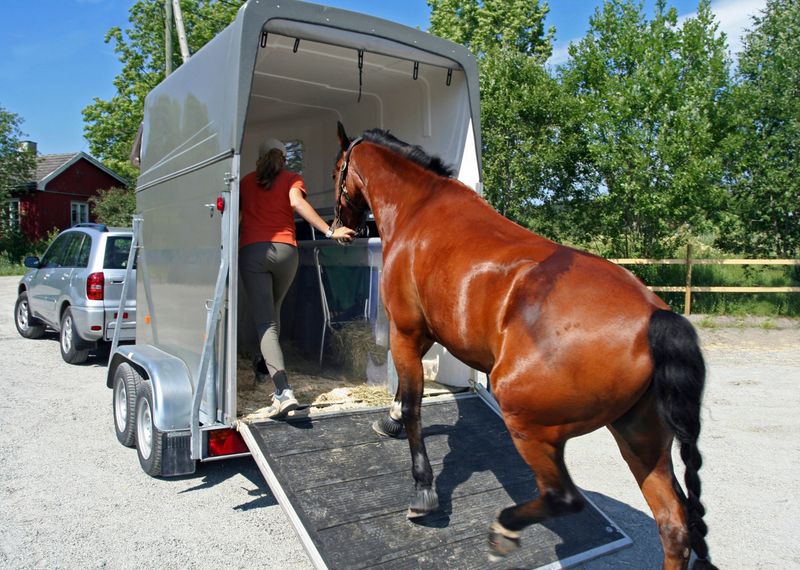
Trailering is part of many trail rides. Smooth loading and unloading are vital for safety.
Begin with desensitization to the trailer space, using treats and praise. Gradually lead your horse in and out.
Consistency and patience build trust, ensuring your horse views the trailer as a secure place. Mastering this skill enhances travel efficiency and safety.
Responding to Rider Cues
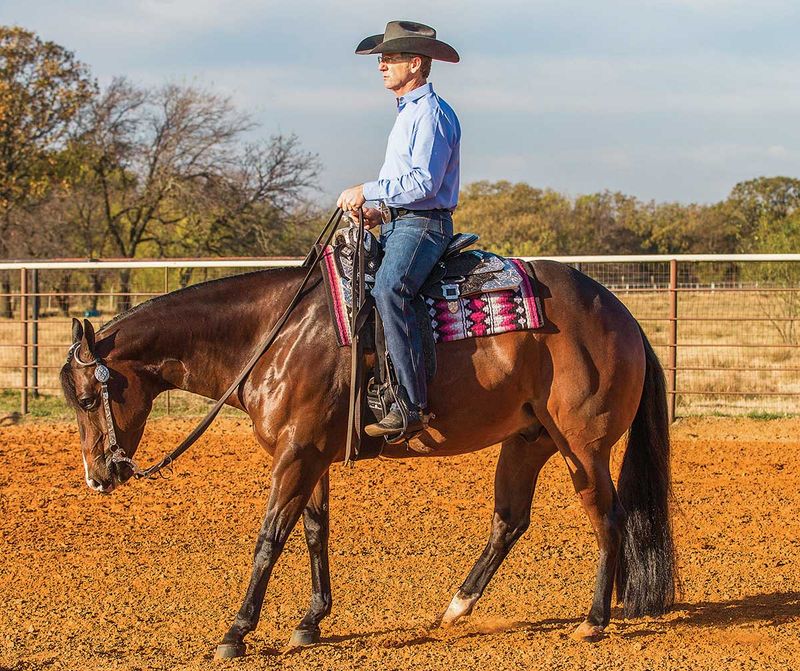
Responsiveness to cues is key to a successful trail ride. A well-trained horse listens attentively.
Consistent practice with basic cues like ‘halt’ and ‘go’ is essential. Introduce more complex commands over time.
Building a solid bond enhances communication and understanding. A responsive horse adapts to trail challenges more effectively, ensuring a harmonious ride.

